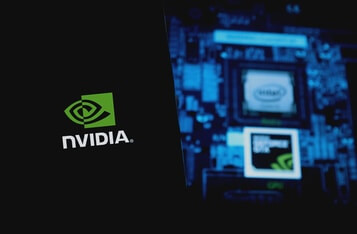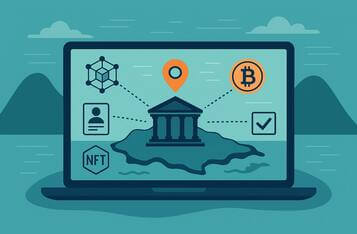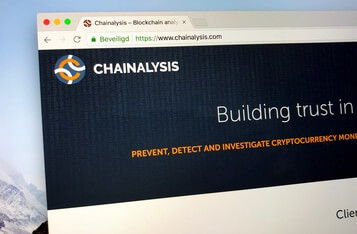P2E Games Need To Emphasize Their Narrative And Artwork Over Quick Monetization Efforts
The first generation of play-to-earn blockchain games has sparked global excitement. But unfortunately, one can't turn a blind eye to their glaring weaknesses and oversights either. For example, building a sustainable game requires a substantial focus on story, artwork, and content rather than monetization.
The Monetization Mindset Is Counterproductive
There is much to like about play-to-earn games and their opportunities. Giving players the ability to own in-game assets and convert them to real money is appealing. Unfortunately, most of these games are also pay-to-lay, as gamers need one or multiple NFTs before they can explore the virtual world. Making an upfront investment - often worth hundreds of dollars - creates a very problematic mindset among players.
Rather than enjoying the game to its fullest, players will try to recuperate that initial investment. As such, they will collect in-game rewards and sell them for money as fast as possible. That approach has created unsustainable in-game economies, affecting titles like Axie Infinity. Its native assets, AXS and SLP, are in the dirt and continue to lose value. There isn't sufficient demand for these currencies, and the overall supply keeps growing too quickly.
However, developers also won't shy away from taking shortcuts. They often know their players will focus on monetization rather than story or artwork. As a result, they spend less time focusing on those elements and only build game worlds with changing backgrounds, mechanics that grow stale, and repetitive content. In most cases, there is no open "living" world to explore, which is not what gaming should be about.
Getting to the market faster than competing games is essential. However, that speedy approach should never compromise storytelling, artwork, or engaging content. P2E Game developers need to rid themselves of the monetization mindset and look beyond how they can make money from players quickly.
Building Games Takes Time
Video games are an art form that combines many different media types, including writing, illustration, and music. As a result, building a video game's narrative and artwork can take an extraordinary amount of time. Moreover, it is a process that shouldn't be rushed, especially not in favor of making a quick buck.
The writer(s) must first develop an original plot, which can be based on a pre-existing idea from another source. They then must figure out how to make this story fit into the game's world. That process may seem straightforward, but it rarely is. Translating a book or movie to a game - or vice versa - often fails when the project is rushed due to ulterior - and greedy - motives.
Once the basic plot is established, artists must create concept art for each scene in the game. They must also design characters, scenery, and other elements the team will use in the finished product. Creativity is not a switch one can flip on or off, though. There are days when the muse flows and other days when the creative part of the brain is as barren as a wasteland.
Finally, developers spend several months working on programming code for every game aspect. That code then goes through rigorous testing internally. Most games will also provide alpha and beta testing to the public to ensure everything works as intended. The entire process takes years, from concept to launch of a game, after multiple testing rounds. Any game launching within a few weeks or months from idea to finish will often compromise one or several of these crucial aspects.
Not All Blockchain Games Cut Corners
Although there are too many P2E titles focused on monetization, other titles succeed in checking the right boxes. Keeping players engaged requires a gamer-first mindset, with monetization taking a backseat. Merging real-life concepts with P2E gaming, as Silks did, shows opportunities are plentiful. In Silks, players participate in a derivative gaming platform focused on thoroughbred horse racing. In-game avatars represent real-world horses born and bred at a facility belonging to the game's creators. NFTs earn in-game rewards based n the horse's real-world performance and training.
Another example of storytelling and engaging gameplay over monetization is Apeiron. The first god game on the blockchain creates a strong narrative, and the team spent over half a decade creating an enticing game world. In addition, players can perform miracles, control their civilization, explore new planets and stars, and generate new planet NFTs through the Celestial Conjunction mechanic. Whether it is planet simulation, PvE world exploration, or PvP/GvG galactic progression, there is always something to do in the Apeiron ecosystem.
When it comes to putting the player first, Plutonians checks the right boxes, too. It is a player-driven game where anyone can create new content: narratives, items, and expansions. Players can share these creations with others without charging them, but they can also sell the content on the marketplace. Putting the player in control of their story - and letting them share the story with others - is an excellent example of gamer empowerment. That is what P2E games should be all about.
Creating a video game is not something one should rush. Major mainstream gaming publishers can develop full-fledged games on a yearly cycle. Even then, they often reuse and rehash most in-game elements from previous versions as there isn't enough time and the monetization mindset takes the upper hand. That is not the path P2E game developers should pursue. The technology is here to build lasting gaming legacies and empower millions of gamers.






